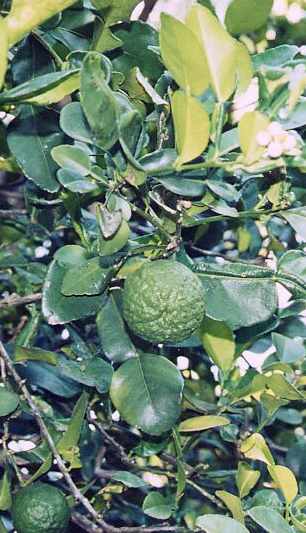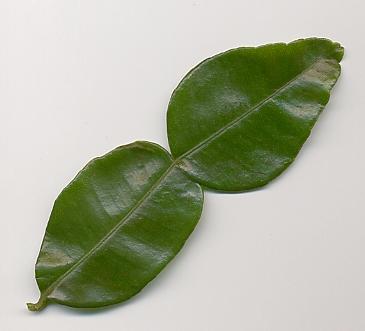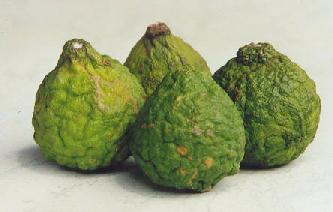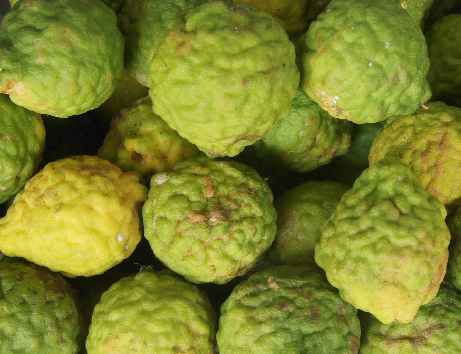
|
| Kaffir lime shrub bearing unripe fruits |

|
| Unripe kaffir lime |
A Thai dish most popular in Thailand and among foreigners is tom yam (also spelt tom yum [ต้มยำ]), a fiery–hot, sour and very aromatic soup prepared from shrimps (tom yam gung [ต้มยำกุ้ง]), chicken (tom yam gai [ต้มยำไก่]) or fish (tom yam pla [ต้มยำปลา]). The soup is flavoured with loads of chiles, lime juice, fish sauce and fresh spices: galanga, lemon grass and kaffir lime leaves. It is served topped with aromatic greens, usually basil (horapha) or coriander.
A related soup is tom khaa [ต้มข่า], which contains more galanga and is less spicy due to a splash of coconut milk added. Similar soups are prepared in other South East Asian countries; see rice paddy herb for a Vietnamese example.
Kaffir lime leaves are also popular in the West of Cambodia, but less so in Vietnam. Malay and Indonesian (especially, Balinese; see also Indonesian bay leaf) cuisines use them sporadically for chicken and fish.
Kaffir lime has a very strong, characteristic fragrance that cannot easily be substituted by other spices; lemon myrtle leaves or simply lime peel is probably the best substitute. Dried leaves lose their flavour within a year; therefore, they are better kept frozen.
The fruit juice, which is very sour and has the same fragrance as the leaves,
is sometimes added to fish or poultry dishes in Malaysia or Thailand. Less
commonly, it is also used in Indonesia. For a summary of sour spices, see mango.





